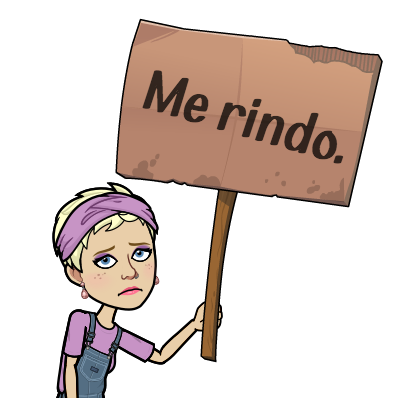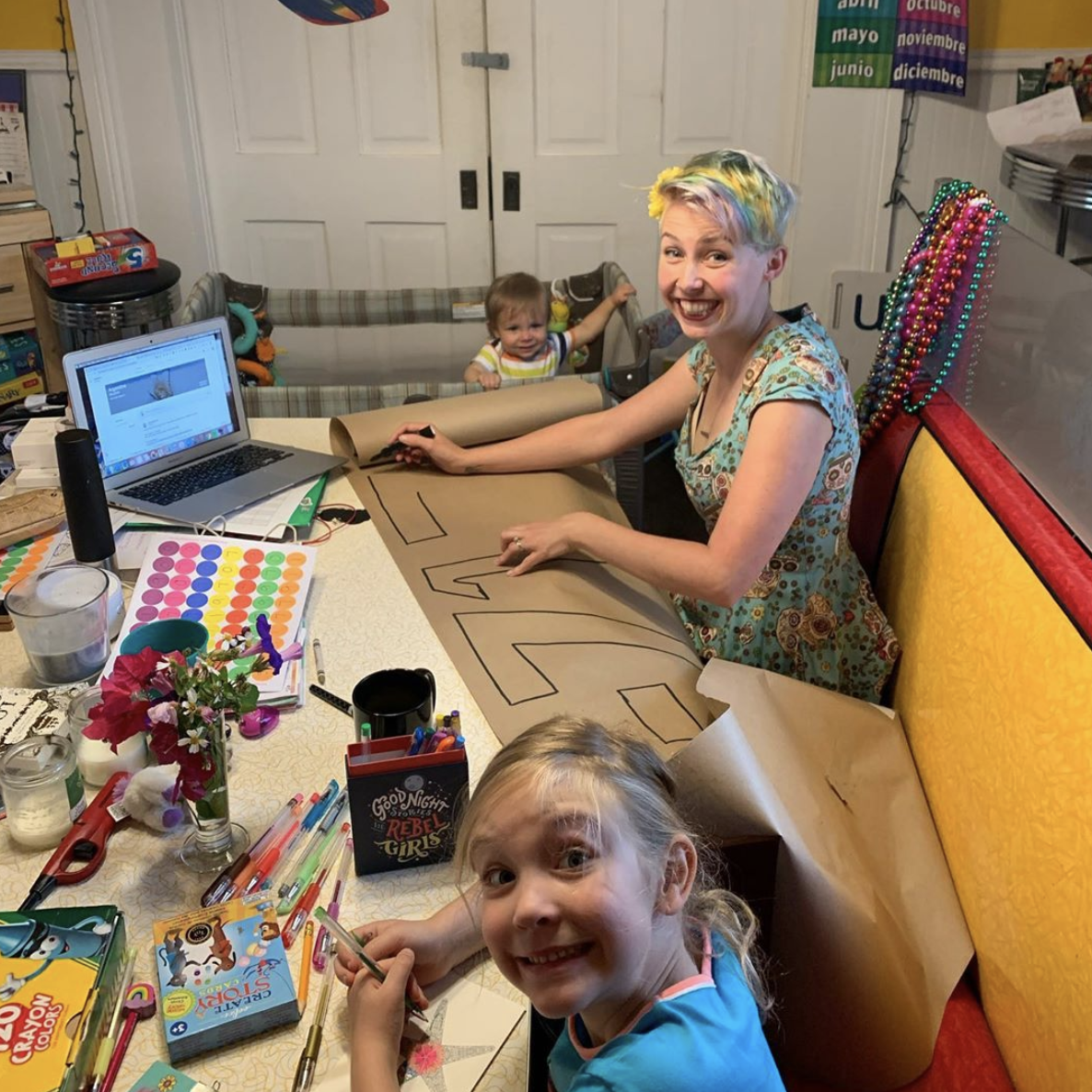Is it really ALL or NOTHING!?!
It has been crazy this past month to collaborate with teachers around the world and hear all of their different situations, challenges, requirements, or lack there of. What I’ve noticed is that for the most part, based on the teachers I’ve been speaking with, we are divided into three groups….
- WL Teachers who are required to do it ALL and MORE (MUCH MUCH MORE)
- You’re teaching almost regular (if not exactly the same) schedules
- You have 4-6 LIVE classes per day
- You have OFFICE HOURS (many didn’t have these BEFORE distance learning started)
- You are required to attend multiple virtual meetings per week (sometimes 1-2 DAILY)
- You must do a certain # of individual “check-ins” per week with students
- You must grade and make comments on ALL student work
- You must give assessments as usual
- WL Teachers who are told that ALL of the work is “optional”
- You’re required to create content and hold daily or weekly virtual meetings
- BUT attendance is TOTALLY optional
- You’re required to make videos or pre-recorded classes
- BUT students watching or engaging in those is TOTALLY optional
- You’re required to check in with students
- BUT NOT tell them to work on your work
- You’re required to hold office hours
- BUT again, totally optional to do the work, totally optional to attend office hours with the teacher
- You’re required to attend daily or weekly meetings
- You’re required to create content and hold daily or weekly virtual meetings
- WL Teachers who are told that ALL of the work is “optional” and not even ALLOWED to do much of anything
- No LIVE virtual meetings through Zoom or Google Meets permitted
- Limited amount of pre-recorded lessons allowed
- NO contact of ANY kind with students (no check-ins)
- All students “pass” for the rest of the year
- IF you create anything it must be minimal and completely optional

We find ourselves in a weird world of “ALL or NOTHING” right now and also, the grass is always greener. Some of you are working more hours than you’ve ever worked and the lines are SERIOUSLY blurred between professional and personal life. Others aren’t even allowed to contact their students to check in on their emotional well-being….
Somethings to keep in mind about our students:
- This is SO much more time than they (or we) anticipated being away from school
- MANY are SO social…. some of them are the “only child”… this is SO hard
- Many of them found safety and comfort at school that they don’t find at home
- MANY had to add lots of hours to their work schedule to make up for the hours or jobs that other family members lost
- Many have ZERO access to technology to do any of the “things” that are optional or required
- Many who DO have technology, have one or more siblings who ALSO need that technology to complete their work. Maybe they’re not priority
- Many students struggle at SCHOOL getting their work done and now at home with little or no supervision, asking them to complete even NEAR the same amount that they were required to do before is not reasonable, feasible, and not going to happen
- They’re dealing with the SAME roller-coaster of emotions that we are but most don’t have the same coping skills we have to handle or work through those
Wow… that is A LOT to read…

With all of this in mind, I wanted to tell you the basic format of the Zoom meetings that I have held (but you could totally do pieces of these as pre-recorded lessons if you’re in the third teacher category I mentioned). I talked about what I planned to do for distance learning with my students in this blog and I am still doing all of those things, but this is going to be specifically about how I’m engaging them in our weekly “meetings/classes”.

- I start by greeting them in English and Spanish saying Hola, and stating EACH of their names as I see them come into the meeting. (Taking care to greet the names of those students who are coming in with no camera)
- Next I go through my classroom rules. I am using similar norms to Leslie Kronemeyer whose rules can be found at the end of the COVID19- Free Resources blog (which I’ve been updating every week by the way!!) I take the time to give a sentence explanation of each norm, every week, so that students remember how each applies to our virtual classroom
- Be respectful
- Be mindful
- Be patient
- Be flexible
- Be responsible
- Then I start with a “check in”. I send kids into breakout rooms to “check” in with each other. I give them two minutes and I pop in briefly to each room
- Next I lead a virtual brain break
- Next, I do our “activity” of the class (I will be blogging more about these in the next week but here is a one line description to give you an idea)
- A reading (with slides and images) re-tell of a Señor Wooly video followed by a write and discuss
- Create a character (like a one word image) followed by a write and discuss
- Play a Quizlet live or GimKit based on a reading or story we told the previous class
- Play a game of guess who
- Introduce a music artist, and new song, then play the song
- I lead one or two brain breaks during the “activity”
- I finish allowing them to “say goodbye” and usually give them 5-10 minutes to just chat with each other and me in English… which they LOVE! Kids drop out of the call when they want to

I want students to WANT to come to my Zoom calls. The “activity” isn’t what I am worried about. I am holding these to find ways to connect them (those that are able) to each other. After all, NOTHING I hold, create, write, or suggest to students is required. I’ve seen more and more participation as the weeks have gone on, and I believe this is because students know that I want them to connect with me and others. This past week I had 35 students on a call!! That is A LOT for me…. (I teach 183 students and I’ve been getting about 5% participation on average).

Whatever you’re doing is great. We are ALL doing our best and our best is enough. Please keep that thought in mind when considering the work your students are doing too… Many of them who are not doing their work are still doing their best, and THEIR best is enough too…
Go easy on yourself, go easy on them, and make sure you’re taking care….
Until next time,
Happy Teaching!
Stay happy, stay safe, stay sane!
Love,
La Maestra Loca


You are beautiful inside and out. Thank you for caring and sharing with us.
Thank you so much Natalie!
¡Hola!
I love the structure of your weekly Zoom meetings. If you’re doing all seven activities, approximately how long is each “class”?
Susan Campbell
hola! if you mean “activities” as in the 7 steps, each class takes between 45 minutes to an hour. The “activity” part (step 5) is anywhere from 15-20 minutes (not including brain breaks)
xoxoxo
¡Gracias! I should have said “steps” and not activities.
No! no worries! I just wanted to make sure you (and others) knew I wasn’t trying to do ALL of those activities in step 5 in one class 🙂
What ages (or grade levels) attend these kinds of Zoom classes?
I teach K-5.
How would you recommend differentiating for different elementary ages/grades?
Or would all elementary beginner level Spanish look fairly similar (as far as virtual meeting structure)?
Are there other online Spanish CI elementary beginner level stories (or websites for stories) that you’d recommend?
Thank you so much for writing this blog. You are amazing!